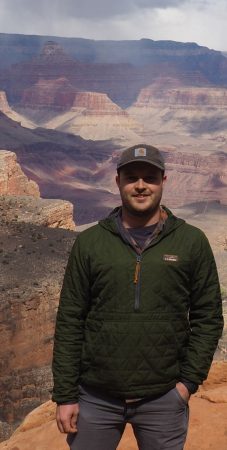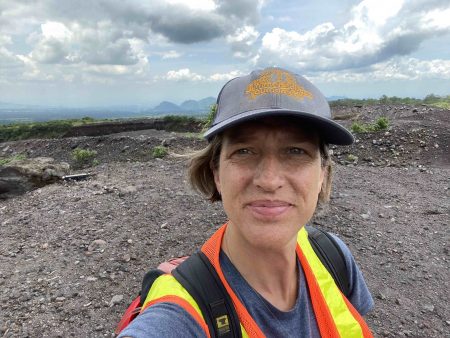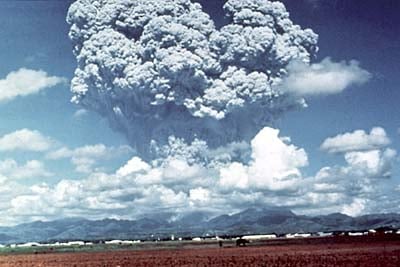On August 3, 2023, Ian Gannon successfully defended his geological engineering research for his MS degree.
Advised by James DeGraff, with Chad Deering and Aleksey Smirnov as committee members.
Title: Integrating LiDAR, Aeromagnetic, and Geological Field Data to Identify Structural-Lithologic Elements Within the Archean Carney Lake Gneiss Complex
Abstract: The Archean Carney Lake Gneiss Complex (CLGC) is a suite of rocks on the southern margin of the Superior Province and within the Minnesota River Valley subprovince. It is one of many gneissic domes in Michigan, Wisconsin, and Minnesota whose complex geology is poorly understood due to a previous lack of economic interest in gneissic terranes and significant challenges to their investigation. As a consequence, the CLGC and other gneissic domes in the region are represented on geologic maps as undifferentiated masses surrounded by better-defined and understood Paleoproterozoic supracrustal rocks and igneous intrusions. Within the last ten years, however, the United States has identified an urgent need to find new sources of critical minerals to sustain and grow the nation’s technology and defense industries, which has renewed interest in these very old and complex rocks. Under the Earth Mapping Resources Initiative (Earth MRI) of the U.S. Geological Survey, the CLGC and surrounding Paleoproterozoic rocks have been remapped to update geologic interpretations and to assist in identifying potential mineral systems in the region. Mapping of the CLGC was accomplished using traditional techniques combined with satellite-based phone applications and differential GPS devices to navigate in dense vegetative cover, to obtain accurate coordinates of field sites, and to collect geologic data at outcrops. As a further aid to ground mapping, high-resolution LiDAR and aeromagnetic data were analyzed to determine topographic and magnetic patterns and textures that potentially reflect structural-lithologic domains within the CLGC.
Integration of the new geologic field data with features and patterns identified on LiDAR and aeromagnetic maps allows definition of three domains within the CLGC: (1) a poly-deformed, mostly felsic gneiss with folded and sheared banding; (2) a meta-igneous, plagioclase-dominated gneiss with poorly expressed banding; and (3) a meta-sedimentary gneiss with thin well-developed banding and local relict sedimentary textures. Outcrop mapping also reveals the widespread occurrence and great variety of younger felsic and mafic intrusions that were not fully appreciated by earlier mappers. Data integration has allowed better definition of geologic unit contacts around the margins of the CLGC and within some Paleoproterozoic metasedimentary units, which updates knowledge about the Sturgeon Quartzite to the northeast and the Vulcan Iron Formation to the south. Although some analytical work is ongoing, such as radiometric age dating, the integrated mapping effort has identified between five to eight tectonomagmatic events that have affected the region, plus a number of sedimentary cycles. The abundance of processes that have affected the area provides multiple opportunities for concentration of mineral deposits that could be attractive for future exploration efforts. The data integration approach developed for this thesis project should be useful in identifying structural-lithologic domains within enigmatic Precambrian gneiss domes elsewhere in the region and globally.









